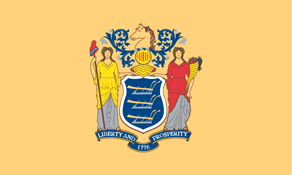New Jersey State Standards for Arts Education: Grade 6

Currently Perma-Bound only has suggested titles for grades K-8 in the Science and Social Studies areas. We are working on expanding this.
NJ.1.1. (Aesthetics) All students will use Aesthetic knowledge in the creation of and in response to Dance, Music, Theater, and Visual Art.
A.1. Knowledge: Examine works of art that have a utilitarian purpose (Functionalism).
A.2. Knowledge: Analyze works of art that place emphasis on structural arrangement (Formalism).
A.3. Knowledge: Describe how an element of an art form contributes to the aesthetic value of a particular work.
A.4. Knowledge: Describe the compositional design in selected works of art or performance.
B.1. Skills: Explain the aesthetic qualities of specified art works in oral and written responses.
B.2. Skills: Incorporate personal life experiences into an aesthetic response about an artwork.
B.3. Skills: Examine how exposure to various cultures and styles influence individuals' feelings toward art forms and artworks.
B.4. Skills: Communicate ideas about the social and personal value of art.
NJ.1.2. (Creation and Performance) All students will utilize those skills, media, methods, and technologies appropriate to each art form in the creation, performance, and presentation of Dance, Music, Theater, and Visual Art.
A.1. Dance: Perform planned and improvised sequences demonstrating aspects of time, space/shape, and energy accurately transferring a rhythmic pattern from the auditory to the kinesthetic.
A.2. Dance: Choreograph and perform dances that communicate meaning on a variety of themes, demonstrating the ability to work in small groups in the choreographic process.
A.3. Dance: Develop dance technique that uses strength, flexibility, balance, and coordination appropriate to age and physical development.
A.4. Dance: Accurately identify and demonstrate basic sequences of movement from at least two different styles or traditions, demonstrating awareness of movement principles in dance (e.g., alignment, balance, initiation of movement, directing of focus).
A.5. Dance: Investigate arts-related careers.
B.1. Music: Read music from progressively complex notation, including mixed meters, compound meters, and the grand staff.
B.2. Music: Sing independently and in groups, both melodic and harmonizing parts, adjusting to the range and timbre of the developing voice.
B.3. Music: Perform simple melodies and rhythmic accompaniments in expanded binary, ternary, and rondo form independently and in groups.
B.4. Music: Improvise simple harmonic accompaniment, melodic embellishments, and simple melodies.
B.5. Music: Demonstrate how the elements of music are used to achieve unity and variety, tension and release, and balance in composition.
B.6. Music: Investigate arts-related careers.
C.1. Theater: Discuss and demonstrate the connection between body, movement, and voice in theatrical expression.
C.2. Theater: Create characterizations in context through manipulation of vocal and physical qualities and circumstances.
C.3. Theater: Collaboratively plan and execute group scenes stemming from improvisational scenes.
C.4. Theater: Analyze classroom dramatizations from different perspectives (e.g., playwright, actor, director, designer) and suggest alternatives for creating and interpreting roles, arranging environments, and developing situations.
C.5. Theater: Differentiate among vocal rate, pitch, and volume as they affect articulation, meaning, and character.
C.6. Theater: Investigate arts-related careers.
D.1. Visual Art: Individually or collaboratively create two and three-dimensional works of art employing the elements and principles of art.
D.2. Visual Art: Distinguish drawing, painting, ceramics, sculpture, printmaking, textiles, and computer imaging by physical properties.
D.3. Visual Art: Recognize and use various media and materials to create different works of art.
D.4. Visual Art: Employ appropriate vocabulary for such categories as realistic, abstract, nonobjective, and conceptual.
D.5. Visual Art: Investigate arts-related careers.
NJ.1.3. (Elements and Principles) All students will demonstrate an understanding of the elements and principles of Dance, Music, Theater, and Visual Art.
A.1. Dance: Analyze both formal and expressive aspects of time, shape, space, and energy in various dance works.
A.2. Dance: Analyze the principles of choreography applied in a master dance work.
A.3. Dance: Differentiate among the various artistic and non-artistic contributions involved in dance production.
A.4. Dance: Analyze the interrelationship between dance movement and the movements of everyday life, and effectively demonstrate the difference between pantomiming and abstracting a gesture.
A.5. Dance: Interpret compositional use of dance elements for expressive purposes.
B.1. Music: Analyze musical elements in response to aural prompts and printed scores representing diverse genres and cultures and notational systems.
B.2. Music: Demonstrate knowledge of the basic concepts of meter, rhythm, tonality, intervals, chords, and harmonic progressions.
C.1. Theater: Examine the range of roles and characterizations possible in theatrical production and performance.
C.2. Theater: Examine the relationship between physicality and character development.
C.3. Theater: Identify various tactics employed by actors to create believable, motivated action.
D.1. Visual Art: Describe the emotional significance conveyed in the application of the elements.
D.2. Visual Art: Describe a work of art that clearly illustrates a principle of design.
NJ.1.4. (Critique) All students will develop, apply and reflect upon knowledge of the process of critique.
A.1. Knowledge: Classify elements of unity or repetition in a work of art.
A.2. Knowledge: Apply domain specific arts terminology to express statements of both fact and opinion regarding works of art.
A.3. Knowledge: Describe the technical proficiency of the artist's work, orally and in writing.
B.1. Skills: Critique performances and exhibitions based on the application of the elements of the art form.
B.2. Skills: Identify and differentiate among basic formal structures within artworks.
B.3. Skills: Consider the impact of traditions in the critique of works of art.
NJ.1.5. (History/Culture) All students will understand and analyze the role, development, and continuing influence of the arts in relation to world cultures, history, and society.
A.1. Knowledge: Reflect on a variety of works of art representing important ideas, issues, and events in a society.
A.2. Knowledge: Recognize that a chronology exists in all art forms.
B.1. Skills: Compare and contrast the contributions of significant artists from an historical period.
B.2. Skills: Hypothesize how the arts have impacted world culture.